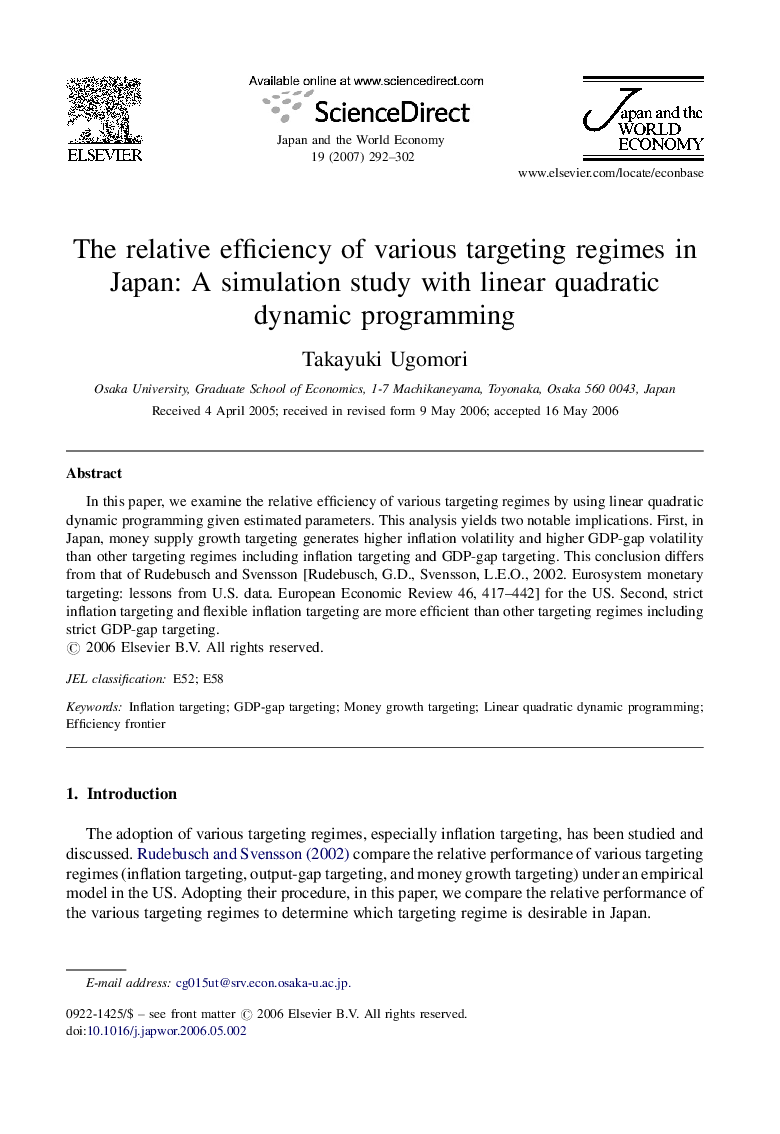| کد مقاله | کد نشریه | سال انتشار | مقاله انگلیسی | نسخه تمام متن |
|---|---|---|---|---|
| 5086488 | 1375187 | 2007 | 11 صفحه PDF | دانلود رایگان |
عنوان انگلیسی مقاله ISI
The relative efficiency of various targeting regimes in Japan: A simulation study with linear quadratic dynamic programming
دانلود مقاله + سفارش ترجمه
دانلود مقاله ISI انگلیسی
رایگان برای ایرانیان
موضوعات مرتبط
علوم انسانی و اجتماعی
اقتصاد، اقتصادسنجی و امور مالی
اقتصاد و اقتصادسنجی
پیش نمایش صفحه اول مقاله

چکیده انگلیسی
In this paper, we examine the relative efficiency of various targeting regimes by using linear quadratic dynamic programming given estimated parameters. This analysis yields two notable implications. First, in Japan, money supply growth targeting generates higher inflation volatility and higher GDP-gap volatility than other targeting regimes including inflation targeting and GDP-gap targeting. This conclusion differs from that of Rudebusch and Svensson [Rudebusch, G.D., Svensson, L.E.O., 2002. Eurosystem monetary targeting: lessons from U.S. data. European Economic Review 46, 417-442] for the US. Second, strict inflation targeting and flexible inflation targeting are more efficient than other targeting regimes including strict GDP-gap targeting.
ناشر
Database: Elsevier - ScienceDirect (ساینس دایرکت)
Journal: Japan and the World Economy - Volume 19, Issue 2, March 2007, Pages 292-302
Journal: Japan and the World Economy - Volume 19, Issue 2, March 2007, Pages 292-302
نویسندگان
Takayuki Ugomori,